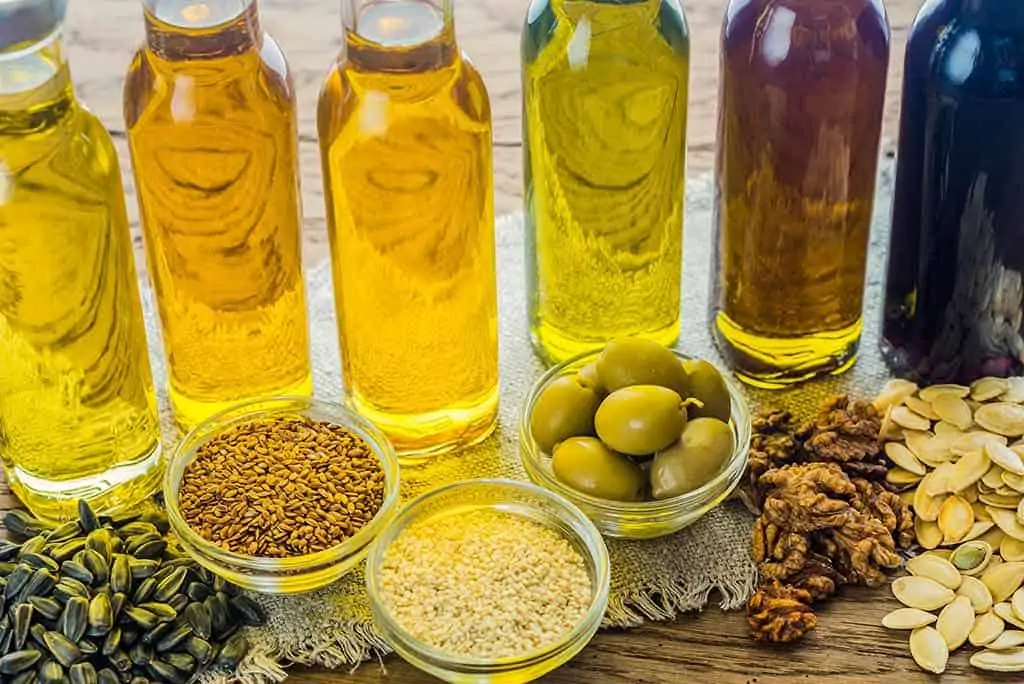Author: Tosh Lubek Published: 29th April 2021
KitchenAcorns.com is supported by its readers. Please assume links on this site are affiliate links or ads, and that I get commissions for purchases made through these links. As an Amazon Associate, I earn from qualifying purchases. Thank you if you use any of the links.
Cooking waffles is an art to many people, and you can make amazing waffles by investing a bit of time and energy into finding the absolute top cooking methods. You might already have looked at things like the best kinds of flour and the nicest toppings, but have you thought about the best oil for waffles?
If not, start thinking – because waffles need grease of some sort either in the batter or on the plates of the waffle iron so that they don’t stick, and you want to choose the nicest option out there.
The best kind of oil to use is a vegetable oil with a neutral flavor and a high smoke point; this will let you cook your waffles hot, getting a nice, crispy exterior.
How To Use Coconut Oil for Waffles
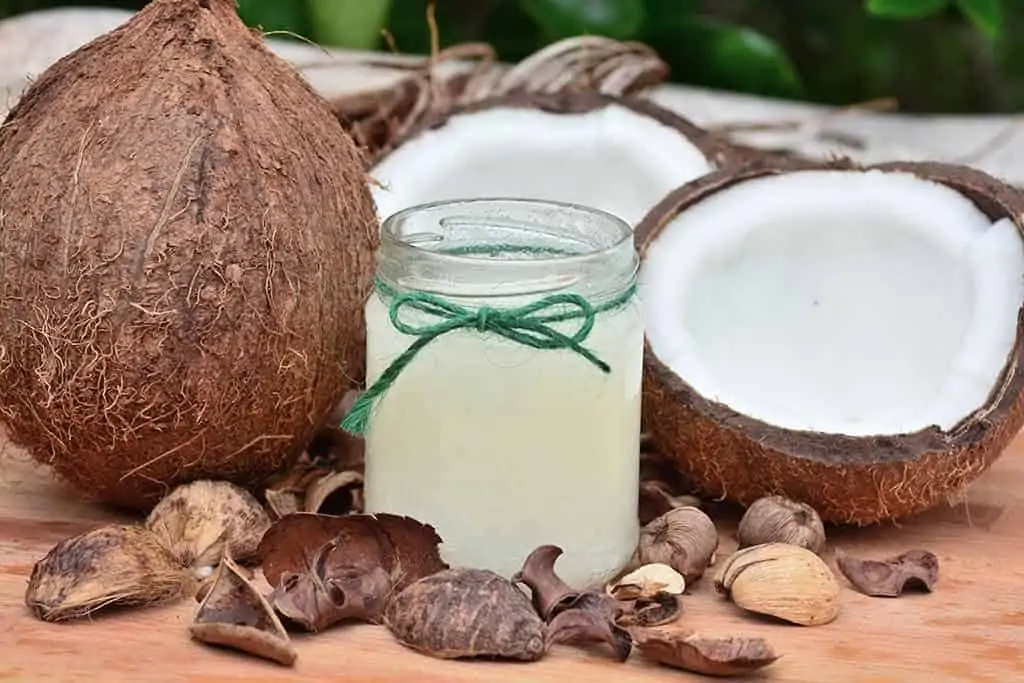
Coconut oil is a very popular choice for waffles and is often considered healthier than vegetable oil. It’s also easy to substitute in, as when heated, it has the same consistency as vegetable oil – so you can swap it into your standard waffle recipe without having to make major changes.
If you want to brush it over the plates of your waffle iron, just warm it slightly to liquefy it, and then you can dip in a soft brush and spread it on.
Coconut oil should behave just like vegetable oil, giving you crispy waffle shells and soft interiors so you can make the perfect waffle every time. You may find that if the waffles go cold, they are harder, as coconut is solid at room temperature – but you should be eating the waffles before they’re cold anyway.
You may also find that coconut oil flavors the waffles a little bit. It is not a strong taste, but if you aren’t used to it, you’re likely to notice it the first few times you make the waffles using coconut oil. However, many people enjoy the flavor and deliberately opt for coconut oil because of it.
If you cook waffles at very high temperatures, the waffles might suffer, because its smoke point is relatively low at 350-385°F (175-196°C), and it may burn.
How To Use Ghee for Waffles
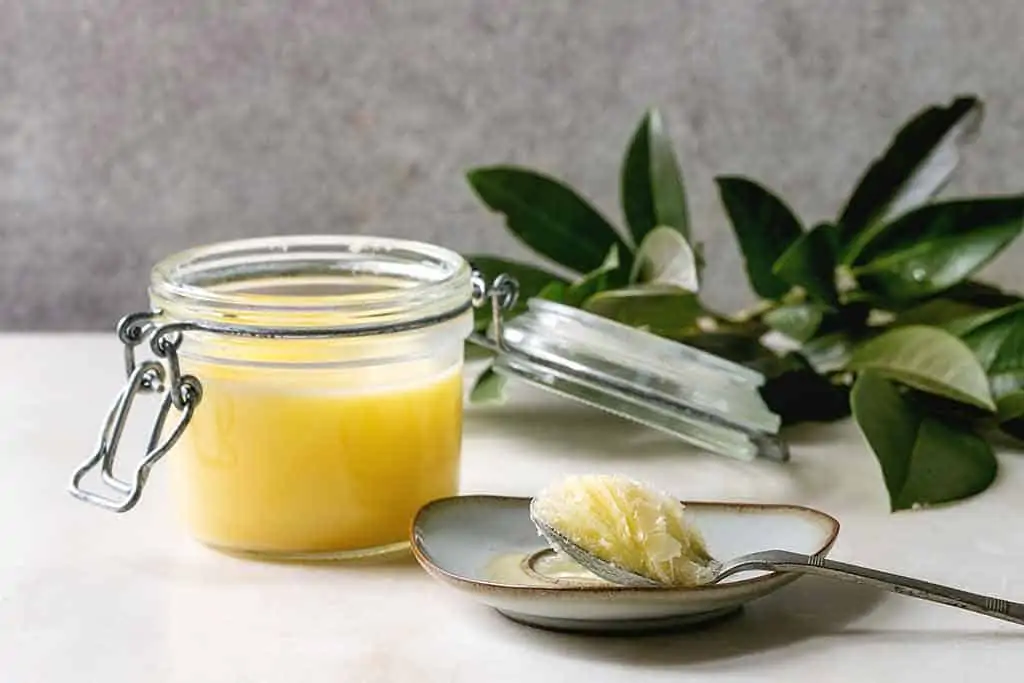
Are you wondering what to use in place of vegetable oil for waffles? Have you considered trying ghee?
Ghee has a high smoke point of 450°F (230°C), which is great for making waffles as you don’t risk burning them while trying to get the shell crispy. You can melt ghee and brush it onto your waffle iron just like any other oil.
Like coconut oil, ghee is usually a solid at room temperature (albeit a soft solid). That means you can easily swap it for the butter in your waffle recipe, giving your waffle a slightly different flavor and a healthier twist.
If you’re using ghee as your grease, you’ll find it behaves much the same as any oil, and your waffles turn out perfectly as long as you have used enough ghee. You can buy ghee online and in most stores.
How To Use Canola Oil for Waffles
If you look online at what kind of oil to use for waffles, you’ll often see “vegetable oil,” which is the generic stuff you might buy in a store.
However, to be more specific, Canola oil makes a good choice for waffles. It lacks flavor, meaning that whatever toppings you want to put on your waffle, you won’t notice any lingering aftertaste or incompatibility. Most vegetable oils are predominantly canola oil, which is derived from rapeseed.
It also has a good smoke point of 400-450°F (204-230°C), so you can use it to grease your waffle trays without worrying about it burning on the high temperature metal. Canola oil isn’t a particularly healthy choice as it is highly processed, but used in small quantities, it’s a great option to keep your waffles from sticking.
How To Use Butter for Waffles
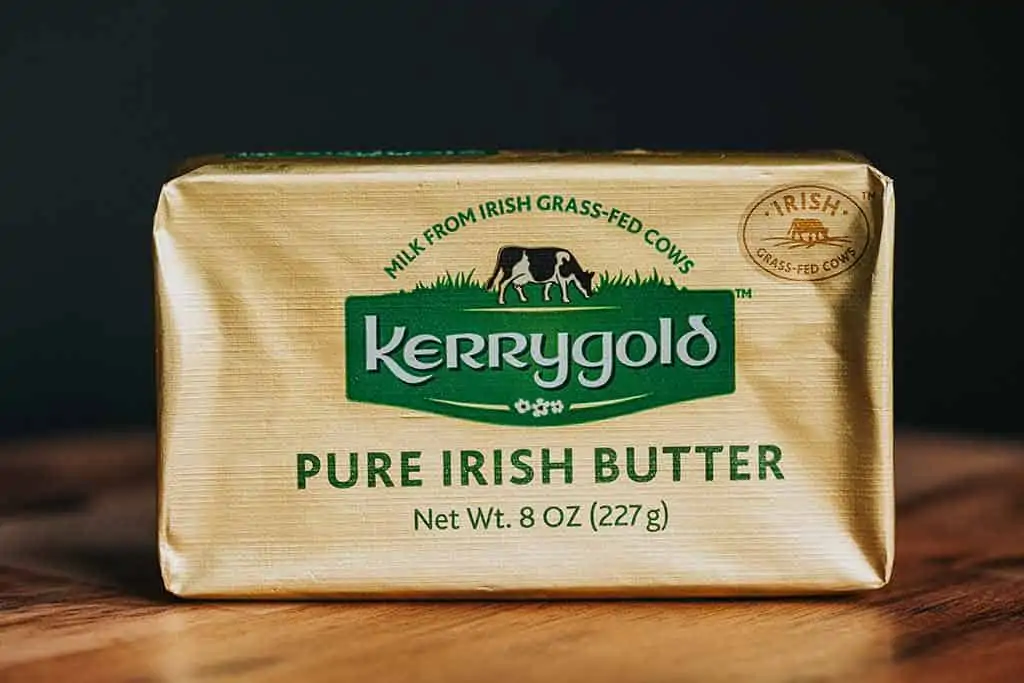
Many people like to use butter for their waffles because it tastes great. The salty tang of the butter enhances the flavor of the waffle and the toppings, and it’s also an ingredient that most people have to hand at any given time.
It’s easy to get butter soft enough to use in a recipe and you can melt it to spread it on the waffle plates. However, you should bear in mind that butter has a smoke point of 350°F (175°C), which is lower than many of the standard vegetable oils.
That means it may not cope so well with the temperature of your waffle maker, particularly if you spread it directly onto the hot plates. You may find this just results in a little extra browning on your waffle, but if you cook on a very high heat, you would be better using a substitute with an oil with a higher smoke temperature.
However, butter is great in waffles, and you can slice up and add softened butter to any waffle recipe. Its smoke point shouldn’t be a problem if it’s cooked in the dough, so you can still use this to enhance your waffle flavor even if you’re worried about it burning when applied directly to the waffle maker.
If you are using a lot of butter in your waffle recipe, try to reduce the salt content, or use unsalted butter to keep the recipe a little healthier. Your waffles will still taste richer as a result of the added butter.
How To Use Olive Oil for Waffles
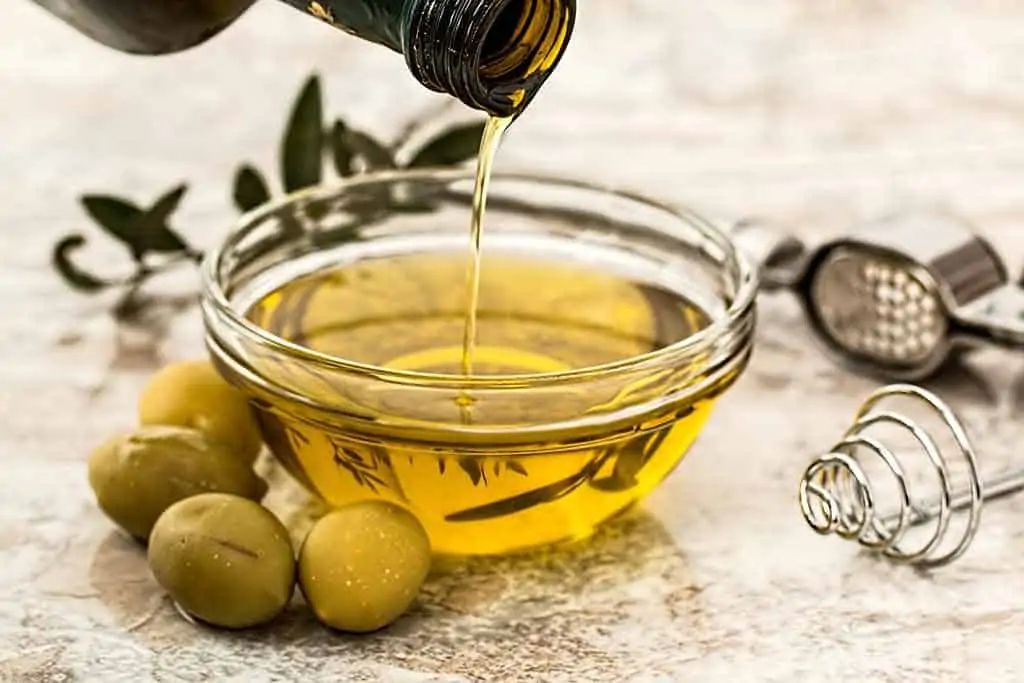
If you’re looking for a healthier option, olive oil is probably high on the list. It’s lower in calories than many vegetable oils are.
However, it shares butter’s problem of a low smoke point of 325-375°F/165-190°C, so it should be used with care, and only if you aren’t cooking your waffles at a very high temperature. Again, you may have more success by incorporating it into your recipe, rather than adding it directly to the waffle maker’s plates.
You should look for “extra virgin” olive oil when searching for the best kind for your waffles. This is the highest quality (yes, it’s likely to be more expensive), but it also has the mildest taste, so it won’t affect the flavor of your waffles.
How To Use Lard for Waffles
Lard can enhance the flavor of waffles, making them creamier. It has zero trans fats, and it is also nutritionally valuable, as well as having a pleasant taste and a great texture. It is high in fatty acids, however.
Lard has a smoke point of 370°F (188°C), which is slightly higher than that of butter, but you should still be careful if you are using high cooking temperatures, or you may find that your waffles take on a burnt taste from the lard.
Remember that lard is not suitable for vegetarians, so it shouldn’t be used in either the recipe or the waffle trays if you are cooking for vegetarians.
How To Use Peanut Oil for Waffles

If you’re looking to experiment with interesting flavors, peanut oil can add a hint of nuttiness to your waffles that you won’t find in regular vegetable oils. Paired with savory toppings, this can make a nice change from your standard waffles, and you don’t have to crack out the peanut butter.
This can be added to the recipe or spread on the waffle plates as easily as any of the other oil options, and it has a reasonably high smoke point of 450°F (230°C).
How to Use Other Flavored Oils for Waffles?
If you’re looking at other, more unusual oils, you might be wondering if you can use those for waffles. For example, sesame oil or avocado oil, or even something like flax oil?
There are many reasons you might want to include these in your diet, if you enjoy the flavor or you’re looking to tap into the health benefits – and the answer is, yes, you can make waffles with pretty much any flavored oil, as long as you think about what toppings you’re going to add and whether the combination will work.
Experiment with the different options and see which oils appeal to you most. Ones that you find don’t work well can be used on salads and in dressings later. Just remember to check out the oil’s smoke point before you use it so you don’t end up with carbonized waffles.
What Type of Oil to Use for Belgian Waffles?
What oil do you use to make waffles if they’re Belgian waffles? Well, fortunately, it doesn’t actually matter too much; you can use any of the oils or fats that you would use in a normal waffle maker, as Belgian waffle makers behave in much the same way.
There are a couple of things that might push you toward one choice rather than another, though. The first is that Belgian waffle makers take a little longer to heat up, so don’t misjudge the smoke point because of that; you need to think about the highest temperature, not the starting temperature.
Next, Belgian waffle makers have deeper grooves. You may find that certain oils adhere better to the metal than others; experiment a bit and see if any fail to stick properly. Otherwise, any oil that works for regular waffles should work for Belgian waffles.
Conclusion
So, the best oil for waffles is down to personal preference, really. You need to think about cooking temperatures and your individual tastes. If you like flavored oils, try a few out and pair them with different toppings to improve your waffle game. Just don’t burn them!
Sources: 1, 2, 3, 4, 5, 6, 7, 8
Tosh learned how to cook while watching his Polish Mom at home. He also worked in a family-owned restaurant while a student and learned much from the chefs. Cooking has always interested him, especially the hearty Polish recipes he learned from his mother. He has helped create and appeared on cookery shows on radio stations in Scotland.
Recent Posts
This family pancake recipe will make about thirty-six pancakes that have a thickness of about 3/8th to half an inch and a diameter of about 4 inches. In my family, I would often prepare a batch of...
If you want to know a lot more about waffles but don’t have the time to read through loads of articles, you’re in the right place. I’ve collected together 25 of the most often asked...


